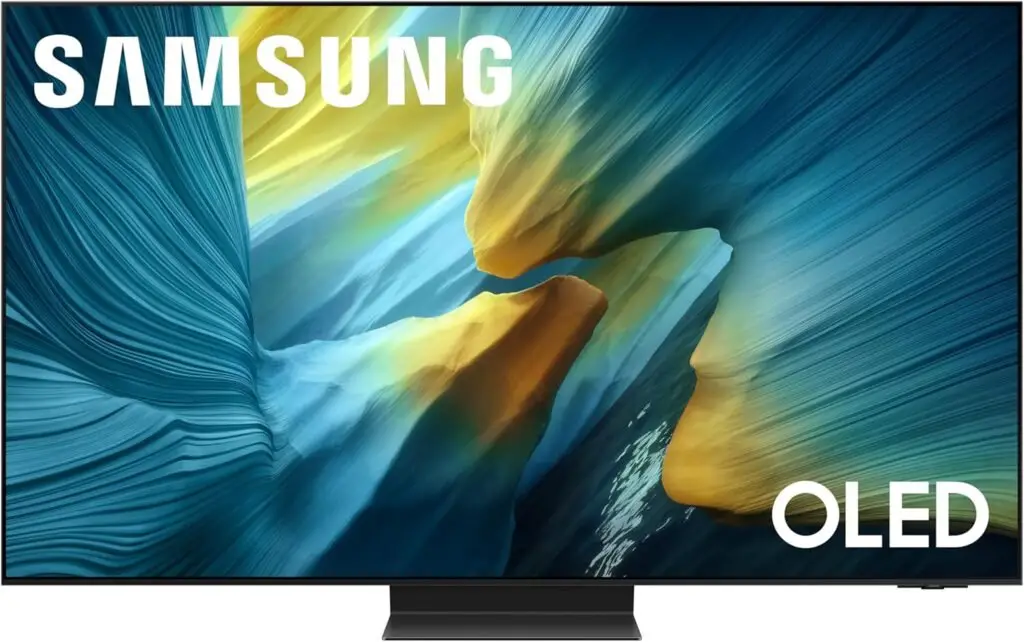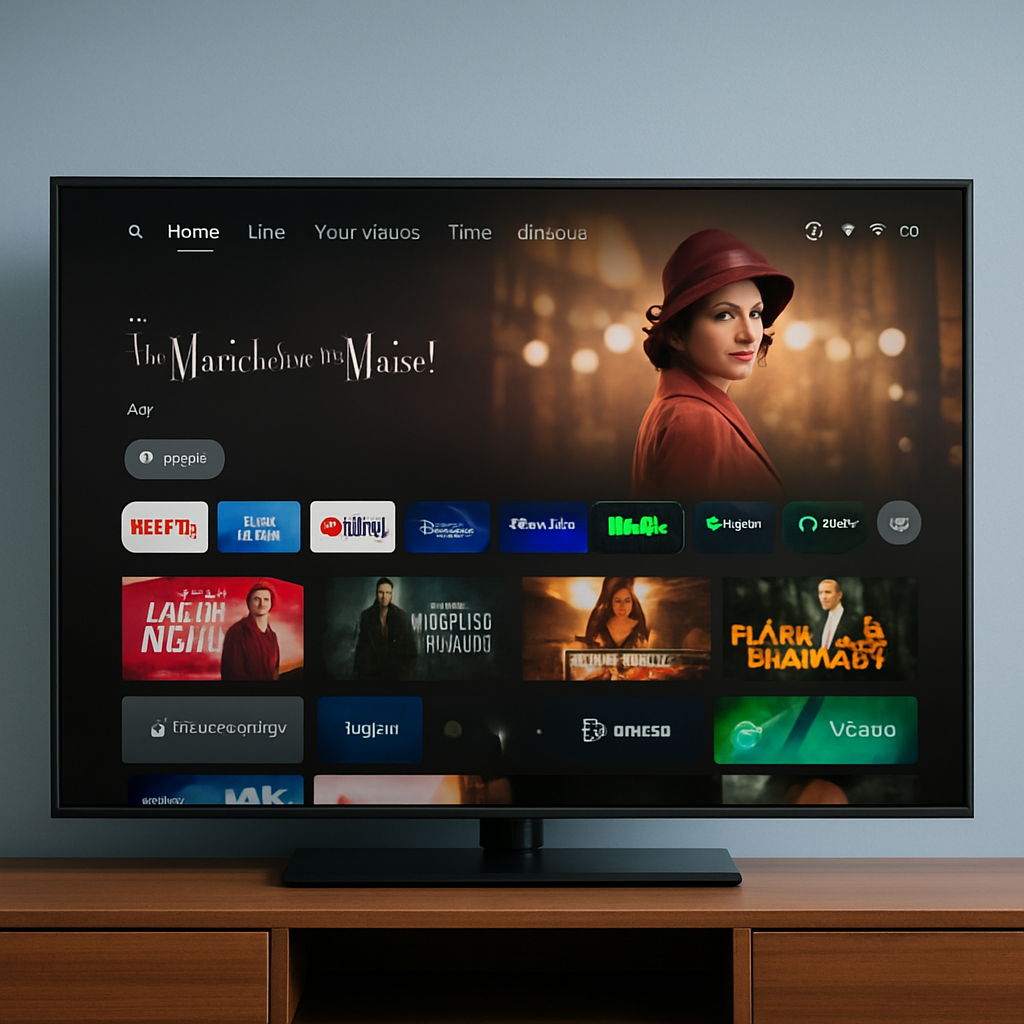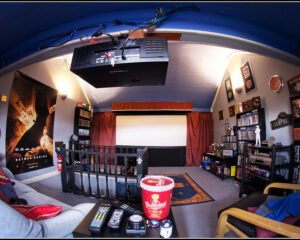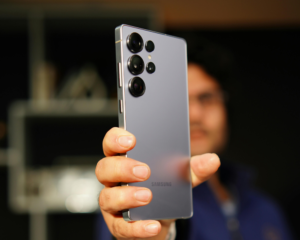The Smart TV Buying Guide 2025 is here to help you make smarter choices when upgrading your home entertainment system. With so many models, display types, and advanced features available, it can feel overwhelming to pick the right smart TV that fits both your lifestyle and budget. That’s why this Smart TV Buying Guide 2025 focuses on the latest global trends, specifications, and deal strategies to ensure you get the best value no matter where you are in the world.
In recent years, the evolution of display technology—such as OLED, QD-OLED, and Mini-LED—has changed the way we experience movies, sports, and gaming. The Smart TV Buying Guide 2025 goes beyond just screen size, helping you understand which resolution, refresh rate, HDR formats, and smart platforms make a real difference. Whether you’re a casual streamer, a dedicated gamer, or a family looking for all-in-one entertainment, this guide highlights the key features you should prioritize.
By using the Smart TV Buying Guide 2025, you’ll learn how to compare specs like HDMI 2.1, Dolby Vision, Wi-Fi 6, and eARC support, while also finding out the best times of year to score deals globally. With this knowledge, you can confidently choose a smart TV that delivers the performance, quality, and longevity you need.
1) Start with the panel: OLED, QD-OLED, Mini-LED, and LED
The biggest picture-quality gains come from panel type. In this Smart TV Buying Guide 2025, here’s how to think about it:
- OLED (including WOLED): Each pixel lights itself, so blacks are truly black and contrast is exceptional. Ideal for home cinema, dark rooms, and movie lovers.
- QD-OLED: Combines OLED’s perfect blacks with quantum-dot color for higher color volume and brightness—great for HDR movies and gaming.
- Mini-LED (QLED/ULED/NanoCell marketing names may apply): Thousands of tiny LEDs with full-array local dimming bring strong brightness and excellent HDR pop at lower prices than OLED.
- Standard LED-LCD: The value choice. Look for “full-array local dimming” over edge-lit for better contrast.
Room tip: Bright rooms benefit from Mini-LED or the brighter flavors of OLED/QD-OLED; dark rooms showcase OLED’s infinite contrast.
2) Size, distance, and resolution
The Smart TV Buying Guide 2025 rule of thumb: bigger screens pay off more than tiny spec differences. For 4K TVs:
- Viewing distance ≈ 1.2–1.6 × screen diagonal for cinematic immersion.
- Popular sweet spots: 55–65″ for apartments/living rooms; 77–85″ if you sit 2.5–3.5m away.
- 8K: Still niche. Choose it only for very large sizes (85″+) and specific use-cases; 4K remains the mainstream standard with the most content.
3) HDR formats and brightness (real-world impact)
High Dynamic Range (HDR) decides how “alive” your image looks. In this Smart TV Buying Guide 2025, prioritize:
- Formats: HDR10 (baseline), Dolby Vision, HDR10+, and HLG (broadcast). More format support = better compatibility.
- Brightness: Look for strong peak brightness (measured in nits) plus effective local dimming. OLEDs now push higher peaks than before; Mini-LEDs still dominate sustained brightness for daylight viewing.
- Color: Quantum-dot models usually reach wider color gamut (Rec.2020 coverage).

4) Motion and gaming: 120/144Hz, VRR, and HDMI 2.1
Gamers and sports fans should focus on the features below—core to any Smart TV Buying Guide 2025:
- Refresh rate: Native 120Hz (or 144Hz on select models) delivers smoother motion.
- VRR (Variable Refresh Rate) and ALLM (Auto Low Latency Mode): Cut tearing and keep input lag low for consoles and PCs.
- HDMI 2.1 bandwidth on at least two ports is ideal for next-gen consoles plus a soundbar/AVR via eARC.
- Game modes: Look for <10ms input lag, black-frame insertion/clear motion options, and Dolby Vision for gaming (if you care about that ecosystem).
5) Smart platforms: which interface suits you?
Your daily experience depends on the OS. This Smart TV Buying Guide 2025 keeps it simple:
- Google TV / Android TV: Deep app library, strong Google Assistant integration, Chromecast built-in, robust recommendations.
- Tizen (Samsung): Slick UI, gaming dashboard, wide app coverage, SmartThings integration for smart-home control.
- webOS (LG): Intuitive cards/tiles, AirPlay support, strong settings control, Magic Remote pointer.
- Roku TV: Simple, reliable, excellent app ecosystem and universal search—great for all ages.
- Fire TV: Alexa-centric experience, excellent voice search, broad app support.
If the built-in platform feels slow, an external streamer (Roku/Chromecast/Apple TV/Fire TV) can extend longevity.
6) Audio: built-in vs. soundbar/AVR
Even the best screens have thin speakers. In this Smart TV Buying Guide 2025, plan for:
- eARC on HDMI to pass Dolby Atmos (and, where supported, DTS:X) to a soundbar or AV receiver.
- Built-in 2.1/3.1/virtual Atmos can be fine for bedrooms, but a dedicated 3.1 or 5.1.2 soundbar transforms movies and sports.
- Room correction and dialogue enhancement features are worth paying for if you watch lots of TV news or dramas.
7) Connectivity, codecs, and future-proofing
“Smart” is nothing without smooth streaming. The Smart TV Buying Guide 2025 checklist:
- Wi-Fi 6/6E (with emerging Wi-Fi 7 in some regions) improves reliability for 4K HDR and cloud gaming.
- Ethernet: Still the most stable for large households—use it if you can.
- AV1 decoding: Increasingly common for efficient 4K streaming; it’s a nice future-proof tick box.
- Bluetooth 5.x for headphones and gamepads.
- USB ports for media playback and optional cameras (video chats/workouts, depending on the platform).
8) Energy use, durability, and panel care
- Energy labels (EU/UK and other markets) help compare yearly consumption—Mini-LED often beats older LED; OLED improves yearly.
- Anti-glare coatings: Crucial for bright rooms; check in-store if reflections bother you.
- Image retention: Modern OLEDs include protections (screen shift, logo dimming). Use varied content; enable pixel-refresh features from the menu.
9) Calibration tips: quick wins without pro tools
The Smart TV Buying Guide 2025 mini-calibration:
- Start with Cinema/Movie/Filmmaker Mode for accurate color.
- Disable Vivid for films (keep it for showrooms).
- Turn motion smoothing off for movies; try mild settings for sports.
- Enable Game Mode automatically for consoles (ALLM).
- Use test patterns (many on YouTube) to set brightness/contrast without clipping highlights or crushing blacks.
10) Warranty, support, and global buying advice
- Warranty length and in-country service matter—especially for large OLEDs and Mini-LEDs.
- Extended protection can be sensible for flagship panels.
- Voltage/plug standards vary; buy region-specific models when possible for full tuner/OS support.
11) Price tiers for quick decisions
Use this fast triage from the Smart TV Buying Guide 2025 to match budget and needs:
- Value (entry to mid): Mini-LED/LED-LCD with full-array dimming, 55–65″, 4K HDR, at least one HDMI 2.1 port, solid smart platform.
- Performance (mid to upper-mid): Brighter OLED or high-zone Mini-LED, 120Hz panel, 2–4 HDMI 2.1 ports, Dolby Vision + Atmos passthrough, great gaming mode.
- Flagship: QD-OLED or premium Mini-LED with exceptional brightness/contrast, 120/144Hz, advanced gaming features, top anti-glare, superior processing.
12) Best times to buy (global)
This Smart TV Buying Guide 2025 wouldn’t be complete without deal timing:
- US/Canada: Super Bowl season (Jan–Feb), Memorial Day, Prime Day(s), Labor Day, Black Friday–Cyber Monday, year-end clearance.
- UK/EU: Spring model rollouts (deal on prior gen), summer promos, Black Friday, Boxing Day/January sales.
- India: Independence Day sales (August), Diwali festival season, Amazon/Flipkart mega events.
- MENA & SE Asia: Ramadan/Eid promotions, 11.11 Singles’ Day, 12.12, and New Year sales.
- Australia/NZ: EOFY (June), Boxing Day, back-to-school.
Bundle smarter: Look for TV + soundbar packages, retailer gift cards, or credit-card cashbacks to beat headline prices.
13) Quick checklist you can screenshot
The Smart TV Buying Guide 2025 essentials:
- Panel: OLED/QD-OLED (cinema/dark rooms) or Mini-LED (bright rooms/value).
- HDR: Dolby Vision + HDR10 (and HDR10+ if possible).
- Gaming: 120Hz, VRR, ALLM, at least two HDMI 2.1 ports, eARC.
- Smart OS you like (Google TV/Tizen/webOS/Roku/Fire TV).
- Wi-Fi 6/6E (Ethernet preferred), AV1 support.
- eARC + soundbar plan.
- Warranty + local service.
- Buy during regional sale windows.
Conclusion
The Smart TV Buying Guide 2025 makes it easier to cut through the noise and focus on what truly matters when upgrading your home entertainment. From display technologies like OLED, QD-OLED, and Mini-LED to must-have specs such as HDMI 2.1, Dolby Vision, Wi-Fi 6, and eARC, the right choice depends on your viewing habits, budget, and long-term needs. By following the recommendations in this Smart TV Buying Guide 2025, you can confidently decide which features are worth paying for and which ones are just marketing buzzwords.
With global shopping seasons and regional deals, there has never been a better time to invest in a TV that delivers immersive streaming, gaming performance, and reliable longevity. Whether you’re setting up a cinematic living room, upgrading for sports, or preparing for next-gen gaming, this Smart TV Buying Guide 2025 ensures you get the best value worldwide.
Stay informed, shop smart, and choose a TV that transforms your viewing experience for years to come. For more detailed guides, product reviews, and the latest updates on global gadgets, visit gadgetsyte.com.
[ratings]







